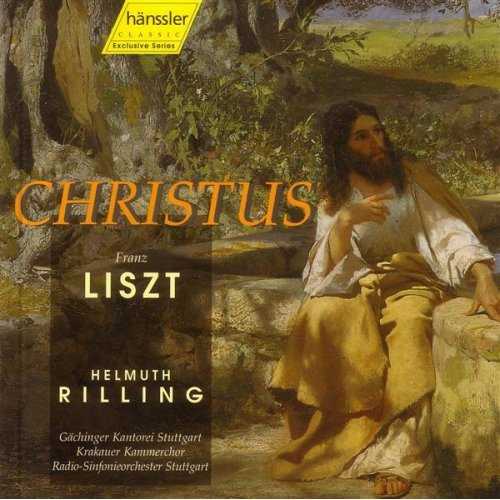
Composer: Franz Liszt
Performer: Henriette Bonde-Hansen, Iris Vermillion, Michael Schade, Andreas Schmidt, Krakauer Kammerchor, Gächinger Kantorei Stuttgart
Orchestra: Radio-Sinfonieorchester Stuttgart
Conductor: Helmuth Rilling
Audio CD
SPARS Code: DDD
Number of Discs: 3 CD box set
Format: APE (image+cue)
Label: Hanssler Classic
Size: 558 MB
Recovery: +3%
Scan: yes
CD 01
01. Christus: Christmas Oratorio: No. 1 – Introduction
02. Christus: Christmas Oratorio: No.2 – Pastorale And Herald Angel’s Song
03. Christus: Christmas Oratorio: No.3 – Stabat Mater speciosa
04. Christus: Christmas Oratorio: No. 4 – Pastoral Music At The Manger
05. Christus: Christmas Oratorio: No.5 March Of The Three Magi
CD 02
01. Christus: After Epiphany: No. 6 – The Beatitudes
02. Christus: After Epiphany: No. 7 – The Lord’s Prayer
03. Christus: After Epiphany: No. 8 – The Founding Of The Church
04. Christus: After Epiphany: No. 9 – The Miracle
05. Christus: After Epiphany: No. 10 – Ride Into Jerusalem
CD 03
01. Christus: Passion And Resurrection: No.11 – Tristis est anima mea
02. Christus: Passion And Resurrection: No. 12 – Stabat Mater dolorosa
03. Christus: Passion And Resurrection: No. 13 – O filii et filiae
04. Christus: Passion And Resurrection: No. 14 Resurrexit
rilling_liszt_____christus_cd_2.rar – 175.0 MB
rilling_liszt_____christus_cd_3.rar – 187.3 MB
Extraodinary “modern” masterpiece
A magnificently recorded and sung version of this monumental (2 hours 42 minutes) but rarely heard work. The brilliant Helmuth Rilling holds it all together superbly. The dramatic and thrilling Stabat Mater section alone is worth the price of the set. I can’t imagine what the audience must have made of it at its first performances in the 1870’s.To call it an oratorio seems somehow inadequate to convey the range of the piece which is a testament to Liszt’s deeply held faith as conveyed in every heartfelt bar. But you do not need to share those religious convictions to appreciate the greatness of the composer’s achievement. Those who think of Liszt only as one of the greatest piano virtuosos who wrote copiously for his instrument will certainly have to think again when they hear Christus or indeed any of his other sacred choral works.
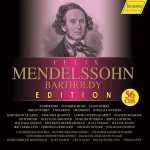
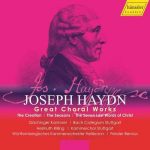
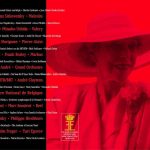
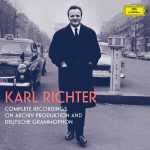
Thank you!
thank you , Whatever
Thanks
Thanks.
Many thanks to Mr. Whatever for this post.
Oratorio “Christus” by Liszt contains a lot of beautiful music. And Helmuth Rilling is without any doubts the optimal performer for this work.
However, let me to add some criticism.
To me, “Christus” by Liszt is very strange, transitional work. It is well-known that Liszt was convinced Christian and servant of Catholic Church. He was looking for ways to reform the Catholic church music. He has sought to avoid romantic and sensual, worldly, concertante approach to music in Catholic worship of that time and to resurrect on a new level the high forms of ancient church music. But in the “Christus” Liszt is on half-way to his ideal. He tries to combine the world of his secular works (with lush, sensual romantic orchestration) – hear e.g. Miracle or Ride ti Jerusalem and the ascetic world of the ancient church singing (with some strange modern harmonies) – hear e.g. Stabat Mater.
But these two worlds cannot intersect. And the result is very strange, noncoherent work without inner unity.
In this result there is an intrinsic thruth. This music shows wery clearly that secular, wordly life cannot be integrated with real Christianity. I am not sure that Liszt wanted to show it in his music; nevertheless, he has shown it. He was a true genius, and sometimes did not understand the depth of what he did.
In any way, oratorio by Liszt gives no aestetic satisfaction to listener. However, there is another “Christus” that can give you such satisfaction. This is mammooth oratorio (5 compact discs) produced by little-known German composer, Felix Draeseke.
Draeseke was contemporary of Liszt. He has written a lot of music – chamber works, symphonies, masses, songs. His most well-known work is Symphony No.3 (“Tragic”) that is very successful attempt to achieve the same effect as in Beethoven’s Ninth without the addition of a chorus. He was devoted follower of Wagner. Somebody at the musical forums has said that “Christus” by Draeseke is the Christian “Ring”. This is thruth; but this is not the whole thruth.
“Christus” by Draeseke is entitled “Mysterium in One Prelude and Three Oratorios”. Accordingly, it consists of four parts.
Prelude describes the Birth of the Saviour and His appointment by Simeon.
First Oratorio (“Consecration of Christ”) describes the preaching by John the Baptist and the Epiphany. To underline the mystical significance of that event, Draeseke introduces the mystical choirs by angels and demons, culminating with the scene of the Christ temptation by Satan in the wilderness.
Second Oratorio (“Christ the Prophet”) includes the most important events from the Christ’s missionary years: wedding in Canaa, the Sermon on the Mount, the healing of the palsied man, “Commeth unto me, all ye that labour an are heavy laden…”, the Lord’s Prayer, the parable about mersiful Samaritan, raising of Lazarus, anoinment of Christ by Mary, Lord’s entrance into Jerusalem and preaching inside the Jerusalem. The selection of evangelical events is close to optimum but has some signs of Protestant view of the Christianity – with some distortion in favour of good deeds in the world and to the detriment of inner regeneration of the man’s soul. I would add at least the parable about the return of the prodigal son.
Third Oratorio is “Death and the Victory of the Lord”, describing the Holy Supper, the Christ’s Passion and Resurrection.
Contrary to the Liszt’s oratorio, “Christus” by Draeseke has no any claims to a church, liturgical mystery. This is work for the stage. However, this work is written by deeply convinced Christian, and music corresponds very good to the described events. This is not opera about Christ. This is some kind of theatrical mystery with strong religious basis. To my own experience, it is very good to hear this oratorio many times during the Great Lent. The music is not striking, but it has its inner depths; the more you hear it the higher aestetic satisfaction and religious impact you will get.
Contrary to the Liszt’s oratorio, “Christus” by Draeseke has intrinsic unity. Several stable motifs (e.g. themes of Christ and Satan) permeate the entire oratorio.
To conclude, “Christus” by Liszt is not great work by great composer; “Christus” by Draeseke is great work by not great composer. If you want to hear really good, intrinsically-united oratorio about the life of Christ, I recommend to hear the work by Draeseke. It is a pity that there is only one recording of this oratorio (on the Bayer label) and that none of conductors of the Rilling caliber paid no attention to this oratorio.
very interesting read!
Thankyou for this lovely lovely work.
Cheers
Jon
Thanks.